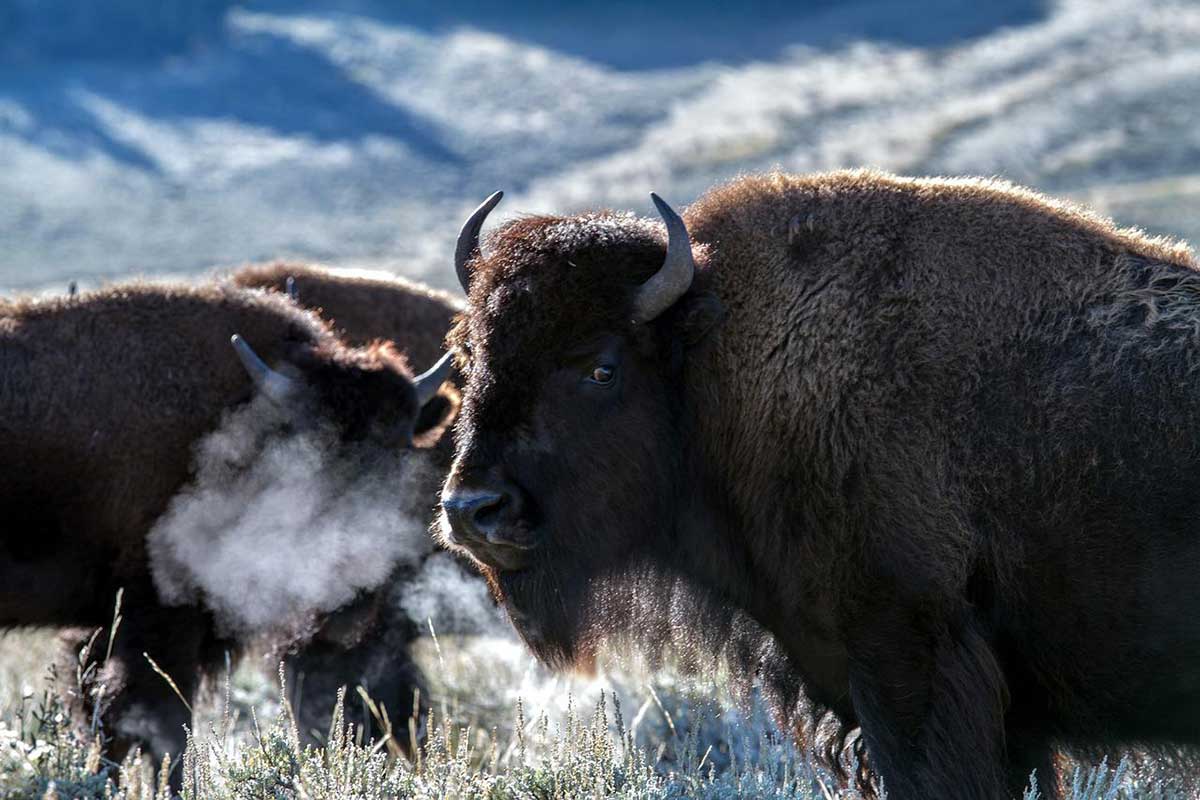Yellowstone National Park is the oldest national park in the country and also one of the most beloved. It’s so unique in many ways, but one way, in particular, is the diverse wildlife. Yellowstone, like no other park, has an abundance of wildlife. In this article, we’re going to tell you 18 facts about wildlife in Yellowstone National Park.
18 facts about wildlife in Yellowstone National Park
1. Yellowstone has an abundance of wildlife
Yellowstone’s unique and preserved environment makes it the home to a huge abundance of wildlife. In fact, it has the largest concentration of wildlife in the lower 48 states.
2. Including 67 species of mammals
There are 67 species of mammals including; badgers, black bears, bobcats, Canada lynx, bats, cougars, coyotes, grizzly bears, weasels, martens, foxes, otters, wolverines, wolves, bison, bighorn sheep, elk, moose, mountain goats, deer, pronghorn, and rodents.
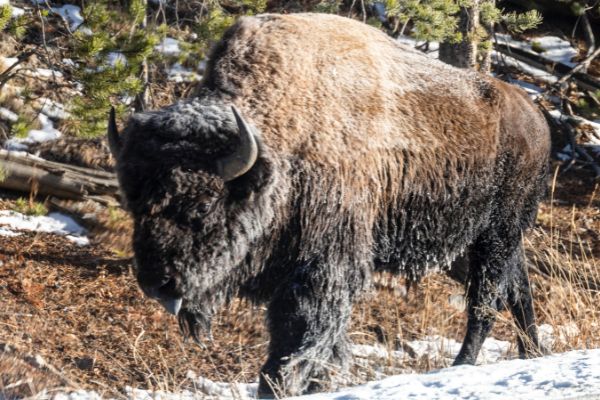
3. Grizzly bears live in the park
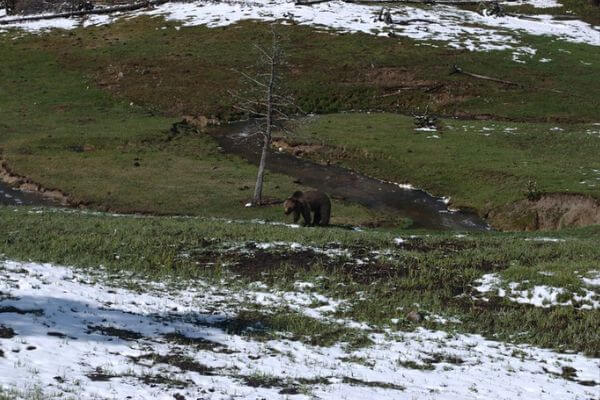
While black bears are more common, there are estimated to be about 650 grizzly bears living in the greater Yellowstone ecosystem.
4. As well as gray wolves
Yellowstone has been an important place for wolves, which were all but extinct in the U.S. by the early 1900s due to habitat loss and hunting. Between 1995 and 1997, 41 wild wolves from Canada and northwest Montana were released into Yellowstone.
Since, that number has doubled and now there are about 80 wolves in multiple packs today. It appears as though these important carnivores in Yellowstone are making a comeback.
5. The wolves are an important part of the food chain
While many people fear wolves would have a negative impact on the environment, the opposite has proven true at Yellowstone. Wolves have created a cascade of positive impacts by keeping the deer and elk populations in check and changing their grazing habits.
6. Bison were hunted almost to extinction
Yellowstone is a safe haven for another species, the bison. Bison were hunted to near extinction in the United States in the 1800s. In the early 1900s, they were very close to extinction in Yellowstone as well until the army, and then the park service began protecting them.
7. Today there are an estimated 4,500 bison in Yellowstone
Thanks to this conservation effort, Yellowstone is the only place in the lower 48 United States to have maintained free-ranging bison since prehistoric times.
8. You will see Bison all over the park
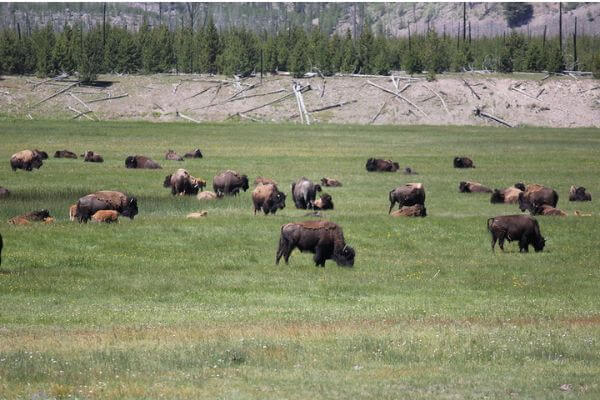
If you are specifically looking for them the best places to start are the Lamar Valley and the Hayden Valley.
9. The most populous large mammal in Yellowstone are Elk
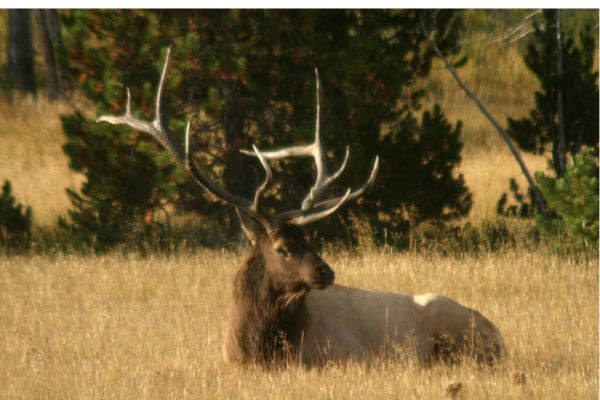
In the winter most Elk migrate to lower elevations outside of the park, but when they return to the park in the warmer months there are upwards of 10 – 20 thousand of them in about a half dozen herds.
10. Listen for the male elk in the Fall
If you visit Yellowstone during the autumn, you may hear the haunting bugle call of the bull (adult male) elk. Rutting (breeding) season for elk runs from late August to mid-October. During the rut, bulls will gather and defend a harem of up to thirty females, and bugle often to announce their dominance.
Bugling can also occur when one bull challenges another, which may come to blows as the elk battle with their large antlers. It’s an exciting time of year to view elk in the park, and you may hear them bugling far into the night.
11.) There are only six reptile species found in Yellowstone
The 6 reptiles found in the park are the Bullsnake, the Terrestrial and Common Gartersnakes, Rubber Boa, Sagebrush Lizard, and the Prairie rattlesnake.
12. There’s one venomous snake
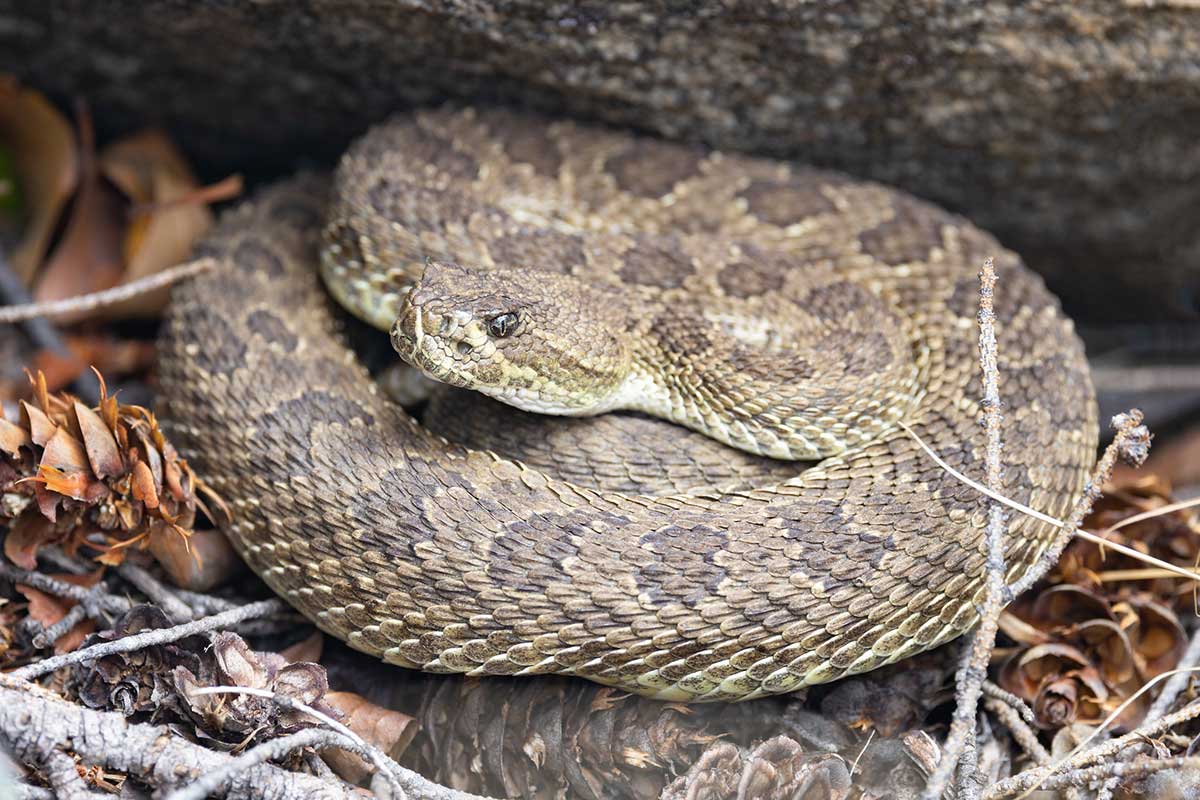
The Prairie Rattlesnake is the only dangerously venomous snake in Yellowstone.
13.) There are four amphibians commonly found in Yellowstone
The Boreal Chorus frog, Columbia spotted frog, Western Tiger Salamander, and Western toads. A small population of Plains Spadefoot toad has also been confirmed.
14. The Yellowstone Cutthroat Trout is an important food source
The most widespread native fish found in Yellowstone are the Yellowstone Cutthroat Trout. Many bird and mammal species depend on them for food.
15. There are 12 native fish species in Yellowstone
The 12 native fish species in Yellowstone are Arctic Grayling, Cutthroat Troat (Yellowstone and Westslope), Mountain Whitefish, Longnose Dace, Speckled Dace, Redside Shiner, Utah Chub, Longnose Sucker, Mountain Sucker, Utah Sucker, and the Mottled Sculpin.
A Yellowstone Park fishing permit must be purchased to fish at the park today. Care must be taken to protect the native fish species, and avoid the introduction of foreign species into the park. Fishing season in Yellowstone begins Memorial Day weekend and goes through the last Sunday in November.
16. And 5 non-native species of fish
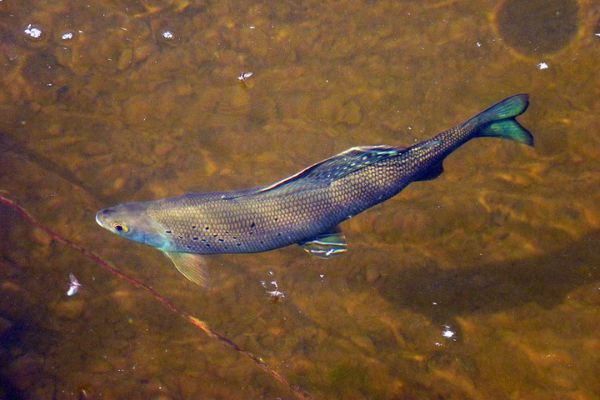
The 5 non-native fish species that have populated the park are the Brook Trout, Brown Trout, Lake Trout, Lake Chub, and Rainbow Trout. In the early days of the park, many areas were stocked with these non-native fish to provide recreational fishing opportunities for guests.
However, it was not known that these non-native species would displace and disrupt the native fish species. Stocking of non-native fish was discontinued around 1930 after these negative impacts were realized.
17. People used to boil fish in the hot spring
A former geyser, now hot spring, on the shore of Lake Yellowstone was discovered by early explorers in the 1800s as a place you could catch a fish and immediately boil it in the hot spring to cook it without even having to take it off the hook.
It became quite a famous story. A ban on this activity was put in place in 1911. Today that hot spring is named the Fishing Cone.
18. Nearly 300 bird species can be viewed in Yellowstone
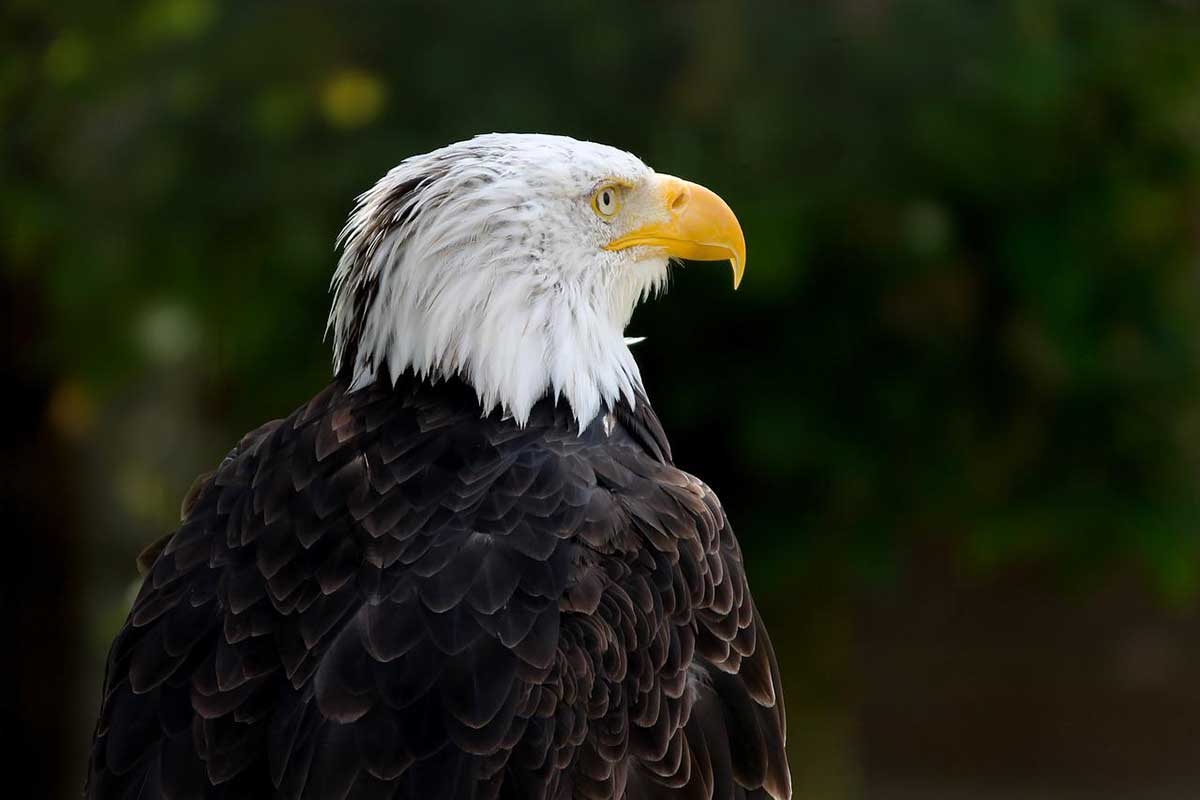
Out of those, 150 species build their nests and raise their young inside the park. Songbirds, woodpeckers, raptors, and waterfowl can all be found in the park, including such large species as Bald Eagles, Trumpeter Swans, and Sandhill Cranes.
